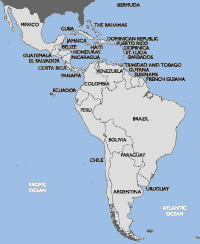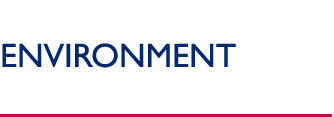USAID/LAC Regional Program
Through its policy recommendations, technical assistance, leadership, and support of past and current regional activities, LAC/RSD has conserved biodiversity and improved management of natural resources. USAID’s ongoing efforts in the Latin America and Caribbean region are helping countries overcome development challenges and confront serious environmental issues.
Background

USAID’s Latin America and Caribbean Bureau’s Office of Regional Sustainable Development (LAC/RSD) has held a long standing commitment to protecting Latin America’s biodiversity and improving the management of its protected areas. Through the Initiative for Conservation in the Andean Amazon (ICAA), implemented in collaboration with 20 partners, USAID is supporting biodiversity conservation in the Amazonian portions of Colombia, Ecuador, Peru and Bolivia. ICAA’s goal is to build capacity and commitment across the Andean-Amazon Basin for effective stewardship of the basin’s nationally and globally important biological diversity and environmental services. ICAA aims to address critical conservation threats and opportunities and to build local conservation capacity throughout the basin.
Over the five years of ICAA, USAID and its partners will have leveraged from the United States Government and other public and private sources approximately US$65 million for conservation in the Latin American and Caribbean region. Because this funding supports the conservation of natural habitat, it contributes to the mitigation of carbon dioxide (CO2) emissions, whether the funding is designated for a protected area, an indigenous reserve, a sustainable use zone near a high conservation value forest, or for conservation policy change.
Sector-Specific Climate Change Activities
Conservation Policy and Awareness
ICAA works to strengthen Andean Amazon capacity to address the challenge of global climate change through two complementary program components: four conservation consortia addressing critical conservation issues at the sub-basin level, and an ICAA support unit to support basin-wide program management and facilitate regional collaboration for conservation. Conservation policy work plays an important role at both of these levels, as ICAA partners help to identify and pursue opportunities to improve national and local policies that promote conservation. Accomplishments thus far have included:
- In Peru, the forestry law specifically allows for payment for ecosystem services schemes; however, no projects have been implemented to date and the lack of a regulatory framework is currently the biggest hurdle for undertaking carbon offsets. ICAA partners are coordinating with the National Natural Resources Institute (INRENA) to develop appropriate regulations on how to implement carbon offset projects, using prior experiences in designing a pilot project to help the government provide the appropriate safeguards for this promising tool.
- In the southwestern Amazon, ICAA partners convened a regional workshop on climate change that brought together policy makers and researchers to share information on the impact of infrastructure and climate change on the area’s forests and rivers, including deforestation. The program also gathered regional government representatives and other stakeholders to organize and share data on carbon stocks and fluxes in the region.
Protected Areas Management
ICAA works to strengthen local capacity to address the challenge of global climate change throughout the Amazon Basin. The program is active in sites that include traditional protected areas as well as indigenous reserves and other multiple-use conservation zones.
In addition to building capacity for protected areas management, ICAA supports unprecedented dialogs that bring together indigenous communities with their elected federations, municipal and national government representatives, and neighboring urban and semi-urban communities to build consensus on land use and to create new indigenous and municipal reserves. Since the beginning of program implementation in 2007, ICAA accomplishments have included:
- In Bolivia, a base-line deforestation analysis carried out over an area of approximately 34,000 km2 in the Apolobamba, Pilon Lajas and Madidi protected areas demonstrated that forest cover loss is statistically lower in protected areas and the titled area within the Tacana indigenous lands than in adjacent, non-protected areas.
- In Ecuador, a workshop carried out for internal auditors of compliance with sustainable agriculture standards included indigenous communities located in the zone of influence of the Yasuní Biosphere Reserve. Twenty-five farmers were trained, who will now train new farmers interested in sustainable agriculture certification, a value-added practice that generates income from existing farms, thus lessening the pressure on the Reserve.
- In Peru, ICAA brought together indigenous communities, neighboring colonist associations and high-level government authorities to establish exclusion zones to protect forests from ongoing production operations and to grant concessions that will resolve a long-standing title request for native lands.
- In Ecuador, ICAA indigenous organization partners worked collaboratively with the municipality of La Bonita to secure the declaration of an unprecedented 70,000 hectare “Municipal Reserve” in the northern part of the Cayambe-Coca Reserve.
Partners
USAID’s partners in climate change activities in LAC/RSD include:
- Collaborating Country – Local Governments
- Collaborating Country – Local NGOs
- Collaborating Country – National Protected Area Services
- International Resources Group (IRG)
- Private Land Holders
- Rainforest Alliance (RA)
- The Nature Conservancy (TNC)
- University of Florida (UF)
- Wildlife Conservation Society (WCS)
Because partners change as new activities arise, this list of partners is not comprehensive.
Back to Top ^
|


